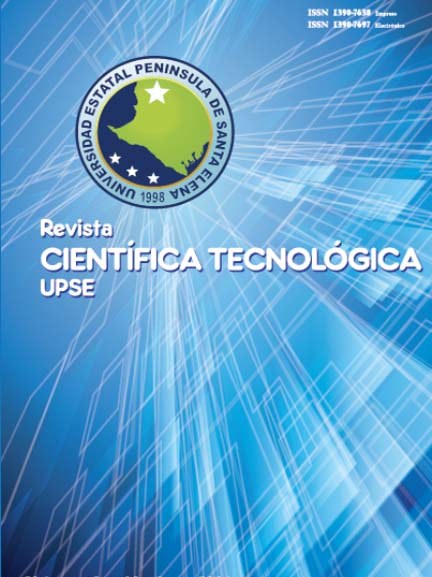Preparation of concrete that minimizes the impact on the environment, using used tires from light and heavy vehicles in the province of Santa Elena
DOI:
https://doi.org/10.26423/rctu.v2i3.63Keywords:
Recycling, environmen, design, concrete, normsAbstract
Waste from rubbers tires are considered to be an environmental and sanitary risk worldwide. As an example in Ecuador, every year nearly 2.4 million rubber tires of various types are discarded as trash, which is equivalent to 55000 tons, according to the Proactive Corporation for Investment Promotion (INVEC). A small porcentage of the waste, are reused to be re-rubberized. But the majority is incinerate or deposited in dumping grounds open to the environment, which is a huge risk to the environment and the health of individuals. The project seeks to create a design of concrete including particles of rubber from discarded tires. The tires will undergo a rigorous selection process, a controlled threading process, and a fabrication according to the specifications of the international standards of concrete of the American Concrete Institute (ACI) and the Construction Ecuatorian Standards (NEC), and based on these specifications, the goal is to obtain an acceptable concrete apt to be used in low traffic streets, sidewalks, pedestrian zones, and other concrete structures, minimizing the environmental impact to the misuse of tires in the province of Santa Elena.
Downloads
References
Moreno, Víctor. Terreros, Carmen. (1995) Mecánica de Suelos. Quinta Edición. Guayaquil.
Romo, Marcelo. (2008). Hormigón armado. Quito, Ecuador.
ACI 318S-08, (2008). American Concrete Institute, Requisitos de reglamento para concreto estructural y comentarios.
Instituto ecuatoriano del cemento y del concreto, (2009). Notas Técnicas, Control de Calidad en el hormigón, Control por resistencia, Parte I. Primera Edición.
Polanco, Abraham (2010), Manual de Prácticas de Laboratorio de Concreto, Universidad Autónoma de Chihuahua-Facultad de Ingeniería.
Instituto Ecuatoriano de Normalización, (2010). Hormigón de Cemento Hidráulico. Determinación de la Resistencia a la compresión de especímenes cilíndricos de hormigón de cemento hidráulico. Primera Edición. Quito, Ecuador.
Carrasco, Ma. Fernada (2009). Santa Fe. Tecnologia del Hormigon-Ingenieria Civil.Linkografía:
http://publiespe.espe.edu.ec/academicas/hormigon/hormigon02-a.htm
http://www.ingenierocivilinfo.com/2011/06/modulo-de-elasticidad-del-hormigon.html
http://www6.uniovi.es/usr/fblanco/Tema8.Materiales.Construccion.Hormigon.pdf
http://disensa.com/librogrande/libro/libro_grande.html
file:///C:/Users/usuario/Downloads/Unidad_3_ROCAS_Y_AGREGADOS_PARA_HORMIGONES.pdf
http://es.slideshare.net/yahil350/ensayo-de- materiales-13447018#
http://www.construmatica.com/construpedia/Hormig%C3%B3n_Endurecido
http://civilgeeks.com/2011/12/11/propiedades-principales-del-concreto/
http://ingevil.blogspot.com/2008/10/ensayo-compresin-de-cilindros-de.html
http://www.ingenierocivilinfo.com/2011/06/modulo-de-elasticidad-del-hormigon.html
Downloads
Published
Issue
Section
License
El titular de los derechos de autor de la obra, otorga derechos de uso a los lectores mediante la licencia Creative Commons Atribución-NoComercial-CompartirIgual 4.0 Internacional. Esto permite el acceso gratuito inmediato a la obra y permite a cualquier usuario leer, descargar, copiar, distribuir, imprimir, buscar o vincular a los textos completos de los artículos, rastrearlos para su indexación, pasarlos como datos al software o usarlos para cualquier otro propósito legal.
Cuando la obra es aprobada y aceptada para su publicación, los autores conservan los derechos de autor sin restricciones, cediendo únicamente los derechos de reproducción, distribución para su explotación en formato de papel, así como en cualquier otro soporte magnético, óptico y digital.












